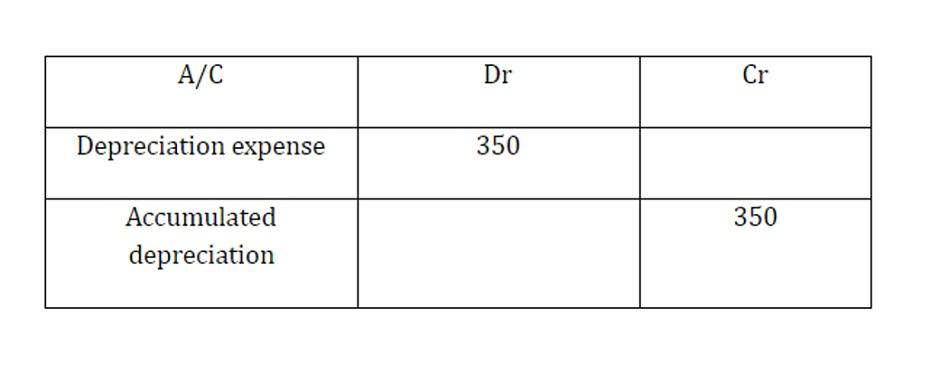
Otherwise, your deduction for this contribution is subject to a 50% AGI limitation. Generally, the income (loss) reported in box 2 is a passive activity amount for all partners. However, the income (loss) in box 2 isn’t from a passive activity if what is a schedule k tax form you were a real estate professional (defined earlier) and you materially participated in the activity. If the partnership had more than one rental real estate activity, it will attach a statement identifying the income or loss from each activity.
If gain is both unrecaptured section 1250 gain and net section 1231 gain, the gain was reported on line 14 and not on line 15, but the partnership included an attachment indicating the amount of unrecaptured section 1250 gain that is also net section 1231 gain. If you are a CFC partner (or in the case of a pass-through entity partner, your partner is a CFC), the partnership attached information to Schedule K-3 so that the U.S. shareholder may complete the Form 5471. If you are a controlled foreign partnership (CFP) partner (or in the case of a pass-through entity partner, your partner is a CFP), the partnership attached information to Schedule K-3 so that the U.S. partner in the CFP may complete Form 8865.
General Instructions
The IRS recommends that the partnership attach a statement to Form 1065 with respect to Part X clarifying that these amounts are not taxable to foreign partners and need not be reported on the foreign partner’s tax return. The new schedules will add a significant new reporting requirement for partnerships and S corporations. The forms are extensive and, thus, require an in-depth understanding of complex international tax concepts. Among other items, the forms require the filer to understand sourcing rules, foreign-derived intangible income (FDII) rules, dual-consolidated-loss rules, Sec. 267A, and the Subpart F and GILTI rules among others. The amounts reported to you reflect your distributive share of items from the partnership’s trade(s), business(es), or aggregation(s), and may include items that are not includible in your calculation of the QBI deduction. When determining QBI or qualified PTP income, you must include only those items that are qualified items of income, gain, deduction, and loss included or allowed in determining taxable income for the tax year.

The services, however, do not give rise to DEI, so USP should not include the partnership’s adjusted basis in Asset D ($1,200) on line 8. If the source is determined by reference to the residence of the taxpayer partner, the section 988 gain and loss would be reported in column (f). Schedules K-2 and K-3 request that gross income https://www.bookstime.com/articles/what-is-a-schedule-c and gross receipts be reported by country or U.S. possession because such information is requested on Forms 1116 and 1118. Income and taxes are reported by country on the Forms 1116 and 1118 so that, for example, the IRS may initially evaluate whether taxpayers are claiming credits for compulsory payments to foreign governments.
Schedule K-1: Partner’s Share of Income, Deductions, Credits, etc.
You can figure the adjusted basis of your partnership interest by adding items that increase your basis and then subtracting items that decrease your basis. If you are the executor of an estate and you have received a decedent’s Schedule K-1, then you have the responsibility to notify the partnership of the name and taxpayer identification number (TIN) of the decedent’s estate if the partnership interest is part of the decedent’s estate. If a decedent died in a prior year and the partnership continues to send the decedent a Schedule K-1 after being notified of the decedent’s death, then you should request that the partnership send a corrected Schedule K-1.
- The amount of foreign tax credit in a tax year is generally limited to the lesser of the foreign taxes paid or accrued or the U.S. tax on foreign source income.
- USP separately has an investment portfolio consisting of several less-than-10% stock investments.
- Your business’s 1120S and your personal K-1 work together as important parts of your annual tax filing.
- Do not report income listed in column (d) as ECI if it is dividends, interest, or royalties paid by a foreign corporation in which you own or are considered to own (within the meaning of section 958) more than 50% of the total combined voting power of all classes of stock entitled to vote.
- Enter the amount of deductions and other items allocated to the partners from the partnership that will be included in the denominator of the partners’ base erosion percentage.
A’s interest expense is apportioned between U.S. source and foreign source income ratably based on the tax book value of A’s U.S. source and foreign source assets. Without taking into account the distributive share of USP’s assets, the amount of A’s interest expense that would reduce passive category foreign source income is $1,000 ($5,000 x (10,000/50,000)). Therefore, A’s passive category foreign source taxable income would be $7,000 ($8,000 − $1,000). At a 25% U.S. tax rate, A may only use $1,750 (25% x $7,000) of the $2,000 of foreign taxes. Accrued OID Reported on Form 1065
The amount of accrued OID reported on Schedules K (Form 1065) which is not taxable to foreign partners should be reported as interest income in column (f) (U.S. source (other)) of Part X, Schedule K-2.
When should I receive my Schedule K-1?
If you file Form 1118, add the amounts reported on these lines to your other allocable rental, royalty, and licensing expenses (other than depreciation, depletion, and amortization) and report the total on the Form 1118, Schedule A, column 13(e), as applicable, by separate category. Do not report amounts in this column on Form 1116 or 1118 unless you elect to re-source such income under an applicable U.S. income tax treaty. See the instructions for Forms 1116 and 1118 for income re-sourced by treaty reported as a separate category of income.

